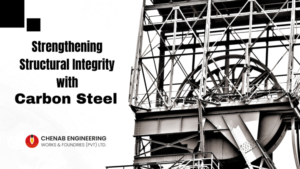Sand casting, an age-old technique, continues to hold a prominent place in the realm of foundry operations. This article delves into the enduring advantages of sand casting, shedding light on why it remains a cornerstone of manufacturing processes across various industries. From its versatility to cost-effectiveness, sand casting proves to be an indispensable method for crafting intricate components.
Versatility: Shaping Complexity with Precision
One of the standout advantages of sand casting lies in its versatility. This method is capable of producing components of various shapes, sizes, and complexities. Whether it’s intricate engine parts for the automotive industry or massive industrial components, sand casting stands as a reliable choice. The adaptability of this technique allows for the creation of a wide range of components to meet diverse industry needs.
Cost-Effectiveness: Maximizing Value
Sand casting offers an economical solution for producing both small-scale and large-scale components. The materials required for sand casting, primarily sand and a binder, are readily available and cost-effective. This affordability extends to the production process itself, making it a preferred choice for manufacturers aiming to strike a balance between quality and cost.
Mold Reusability: Sustainability in Action
Unlike some casting methods that involve one-time-use molds, sand casting molds are often reusable. This characteristic significantly reduces material waste and supports sustainable manufacturing practices. By extending the lifespan of molds, sand casting aligns with the principles of environmental stewardship and resource efficiency.

Complex Geometries: Pushing Boundaries in Design
Sand casting excels in producing components with intricate and complex geometries. The malleability of sand molds allows for the creation of detailed features and precise contours. This capability is particularly valuable in industries where components demand a high level of precision and customization, such as aerospace and automotive engineering.
Material Compatibility: A Wide Range of Alloys
Sand casting accommodates a diverse array of alloys, from aluminum and brass to iron and steel. This flexibility in material selection is crucial for industries where specific material properties are non-negotiable. Whether it’s the lightweight properties of aluminum or the strength of steel, sand casting can cater to a broad spectrum of material requirements.
Efficient Production Cycles: Meeting Timelines
The process of sand casting is often faster compared to other casting methods. The relatively straightforward setup and production cycle enable manufacturers to meet tight timelines. This efficiency is vital in industries where rapid turnaround times are a critical factor, ensuring that components reach the market or production line in a timely manner.

Intricate Cores: Enabling Hollow Structures
Sand casting allows for the incorporation of cores, which are inserts placed within the mold to create hollow or complex internal structures in the final component. This capability is essential for industries that require components with internal passages, such as in the production of engines and pipes.
Adaptability to Large-Scale Production: Scaling with Demand
Sand casting can be readily scaled up to accommodate large production runs. This scalability is pivotal in industries with high-volume manufacturing needs. By maintaining consistent quality across large quantities, sand casting supports industries in meeting market demands effectively.
Conclusion: Sand Casting’s Enduring Significance
In conclusion, sand casting’s enduring significance in foundry operations stems from its versatility, cost-effectiveness, and ability to produce intricate components. Its compatibility with a wide range of alloys, efficient production cycles, and adaptability to large-scale production further solidify its position as a cornerstone of manufacturing processes. As industries continue to evolve, sand casting remains an indispensable method for crafting components that underpin progress across various sectors.





